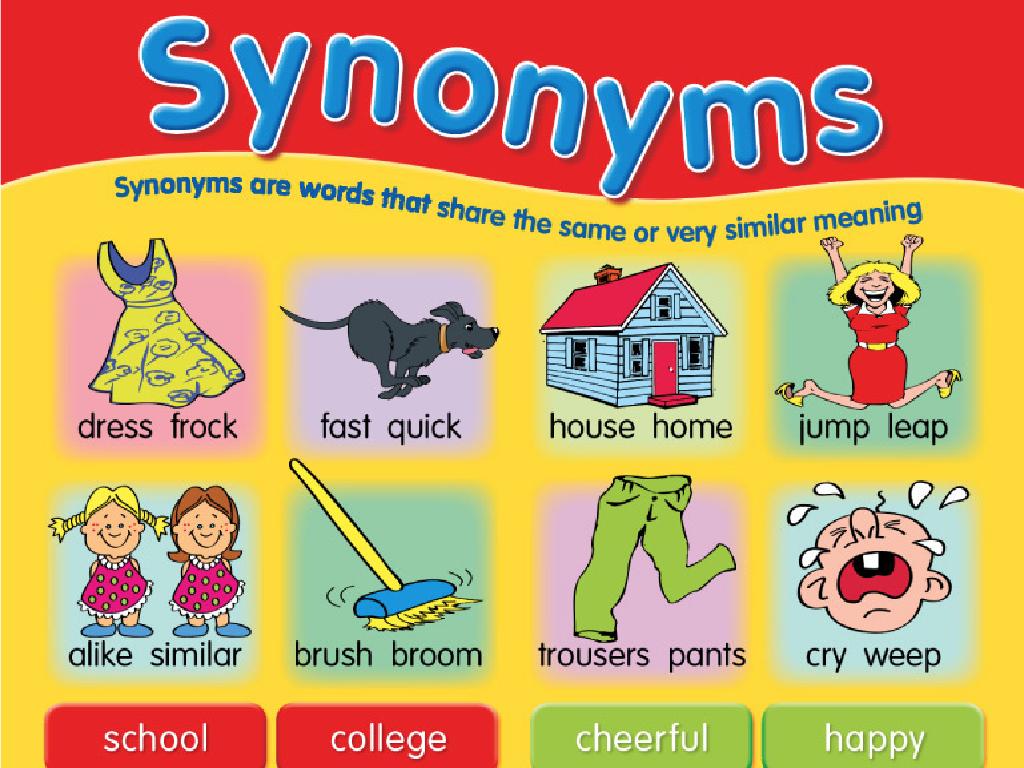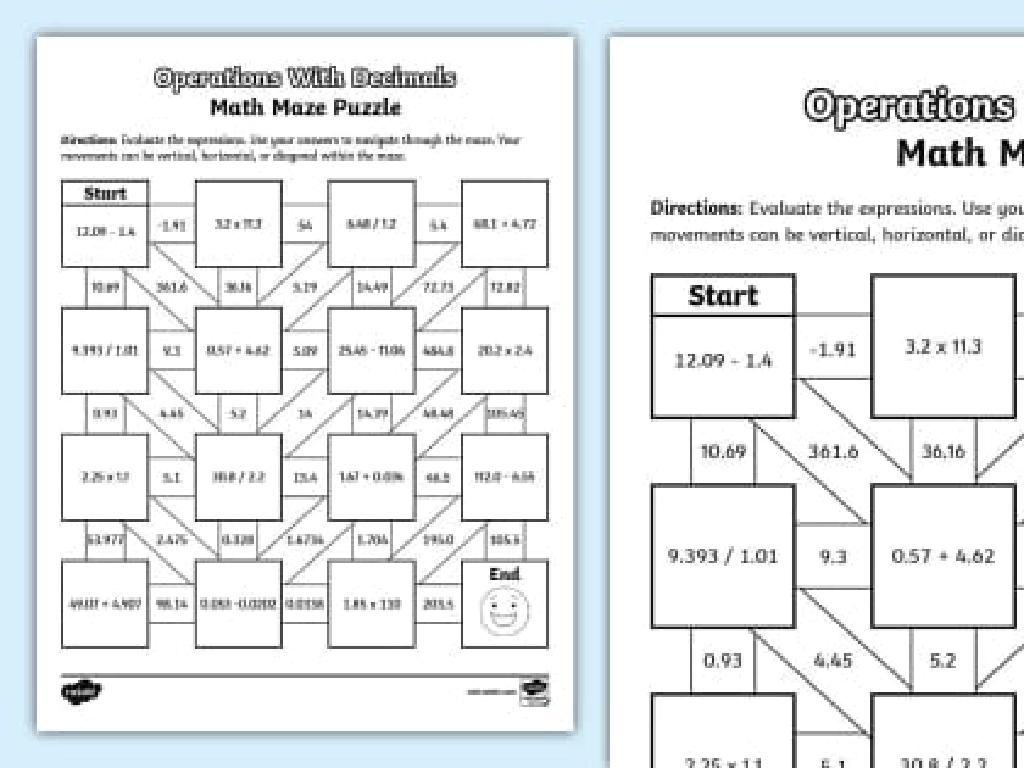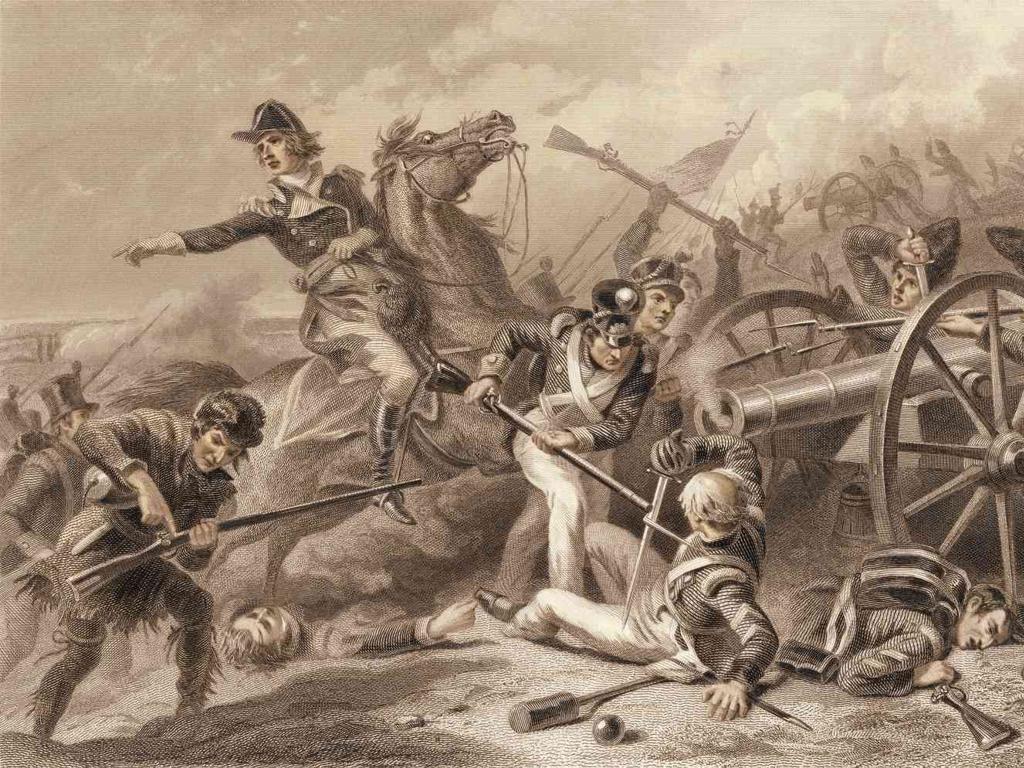Classify Rocks As Igneous, Sedimentary, Or Metamorphic
Subject: Science
Grade: Fourth grade
Topic: Rocks And Minerals
Please LOG IN to download the presentation. Access is available to registered users only.
View More Content
Welcome to the World of Rocks!
– Become a rock detective today
– Learn three main rock types
– Igneous, sedimentary, metamorphic
– Discover rocks’ role in Earth
– Rocks form the Earth’s crust
– Explore how rocks are formed
– Formed by cooling, layering, pressure
|
In this lesson, students will be introduced to the fascinating world of rocks and their classifications. They will learn about igneous, sedimentary, and metamorphic rocks and the processes that form them, such as cooling magma, sediment deposition, and intense heat and pressure. Emphasize the importance of rocks in forming the Earth’s crust and how they are a crucial part of our planet’s ecosystem. Encourage students to observe rocks in their environment and consider how they might have been formed. This will help them understand the rock cycle and the dynamic nature of Earth’s geology.
Exploring Rock Types
– Rocks: Combinations of minerals
– Like a cookie has chips, rocks have minerals
– Rocks make up Earth’s crust
– The outer layer we walk on is the crust
– Each rock type tells a history
– How they form reveals Earth’s past
– Three main types: Igneous, Sedimentary, Metamorphic
– Igneous from cooling lava, Sedimentary from layers of sediment, Metamorphic from heat and pressure
|
This slide introduces students to the basics of rocks and their classifications. Emphasize that rocks are not just random stones but are made up of different minerals, much like ingredients in a recipe. Explain that the Earth’s crust is like the skin of an apple – it’s the outermost layer of our planet. Highlight that every rock has a story that can tell us about the Earth’s history, such as where and how it formed. Introduce the three main types of rocks: igneous, formed from cooled lava or magma; sedimentary, made from compressed layers of sediment; and metamorphic, which are transformed by heat and pressure. Use relatable analogies and encourage students to think of questions about how different rocks they’ve seen might have formed.
Exploring Igneous Rocks
– Igneous rocks from molten rock
– When lava cools and hardens, it forms igneous rocks.
– Intrusive vs. Extrusive types
– Intrusive rocks form inside Earth, extrusive on the surface.
– Example: Granite (intrusive)
– Granite forms under the surface from cooled magma.
– Example: Basalt (extrusive)
– Basalt forms from lava that cools quickly on Earth’s surface.
|
Igneous rocks are one of the three main types of rocks that students need to learn about. They are formed from the cooling and solidification of molten rock, which is called magma when it’s beneath the Earth’s surface and lava when it erupts onto the surface. Intrusive igneous rocks, like granite, cool slowly beneath the Earth’s surface, leading to larger crystals. Extrusive igneous rocks, like basalt, are formed from lava that cools quickly on the surface, resulting in fine-grained rocks. Provide samples or pictures of granite and basalt to help students visualize the differences. Encourage students to think about the environments where these rocks might form and the processes that lead to their creation.
Exploring Sedimentary Rocks
– Formed from particles & remains
– Made of eroded rock bits or organic remains
– Layers indicate age & history
– Each layer represents a period in Earth’s history
– Examples: Sandstone, Limestone
– Common types found around the world
– Importance of sedimentary rocks
– They help us understand Earth’s past environments
|
Sedimentary rocks are a type of rock that forms from the accumulation of sediment, which can include fragments of other rocks, minerals, and organic material like plant or animal remains. Over time, these sediments are compacted and cemented together. The layers of sedimentary rocks can tell us a lot about the Earth’s history, such as changes in the environment or climate over time. Examples like sandstone, formed from sand particles, and limestone, often made from accumulated marine life, are great for students to explore. Encourage students to think about how these rocks might have formed and what stories they tell about the past.
Metamorphic Rocks
– Formed from heat and pressure
– Intense heat and pressure deep in the Earth transform existing rocks.
– Rocks change into new types
– Like a caterpillar becomes a butterfly, one rock type morphs into another.
– Examples: Marble and Slate
– Marble forms from limestone, Slate from shale.
|
Metamorphic rocks are one of the three main rock types and are created through the transformation of pre-existing rock types through high temperatures and pressures deep within the Earth’s crust. This process, known as metamorphism, alters the mineral composition and structure of the rock without melting it. Common examples include marble, which originates from limestone, and slate, which comes from shale. These examples help students visualize the concept of metamorphism. Encourage students to think about the immense forces required to transform rocks and relate it to the incredible power of Earth’s geological processes.
The Rock Cycle: Earth’s Rock Transformers
– Rocks change over time
– Connection of rock types
– Igneous, sedimentary, metamorphic rocks are interlinked
– Transformation through nature
– Rocks can become other types with the right conditions
– Heat, pressure, and weathering
– Intense heat, pressure deep within Earth, cooling lava, and surface weathering
|
This slide introduces the concept of the rock cycle to the students, explaining that rocks are not static but can change into different types over time. The rock cycle diagram (not shown here) can be a helpful visual aid. It’s important to emphasize that the three main types of rocks – igneous, sedimentary, and metamorphic – are connected through various processes such as melting, cooling, and erosion. Heat and pressure can transform sedimentary rock into metamorphic rock, while cooling can turn magma into igneous rock. Weathering and erosion break down rocks into smaller pieces that can eventually form sedimentary rock. Encourage students to think of this as a recycling process that happens over millions of years.
Identifying Rock Types
– Observing color and texture
– Rocks have unique colors and textures that hint at their type.
– Understanding rock composition
– Composition means what minerals a rock is made from.
– Using a rock identification chart
– Charts help us match observations to rock types.
– Group practice on rock identification
– We’ll look at real rocks and figure out what they are together!
|
This slide introduces the basic methods for identifying different types of rocks. Emphasize the importance of observing the color and texture, as these are the most apparent features that can be used to distinguish between rock types. Explain that the composition of a rock refers to the minerals that make it up, which requires a closer look or even a magnifying glass. Introduce the rock identification chart as a tool to help match their observations with specific rock types. Plan a hands-on group activity where students can apply what they’ve learned by examining and classifying real rock samples. Provide guidance and encourage discussion among students as they work together to identify each rock.
Class Activity: Rock Investigation
– Examine rock samples in groups
– Classify rocks by type
– Is it igneous, sedimentary, or metamorphic?
– Share findings with the class
– Discuss the rock cycle
– How are these rocks formed?
|
This activity is designed to give students hands-on experience with real rock samples. Divide the class into small groups and provide a variety of rock samples. Instruct students to observe the texture, color, and other properties to classify each rock. They should determine whether the rock is igneous (formed from cooled magma or lava), sedimentary (formed from sediment compression), or metamorphic (formed under heat and pressure). After classification, each group will share their findings with the class, discussing the characteristics that led to their decision. Conclude with a discussion on the rock cycle to understand how rocks can transform from one type to another over time. Possible activities include drawing a rock cycle diagram, writing a story from the perspective of a rock undergoing these changes, or creating a chart of the rock types and their features.






